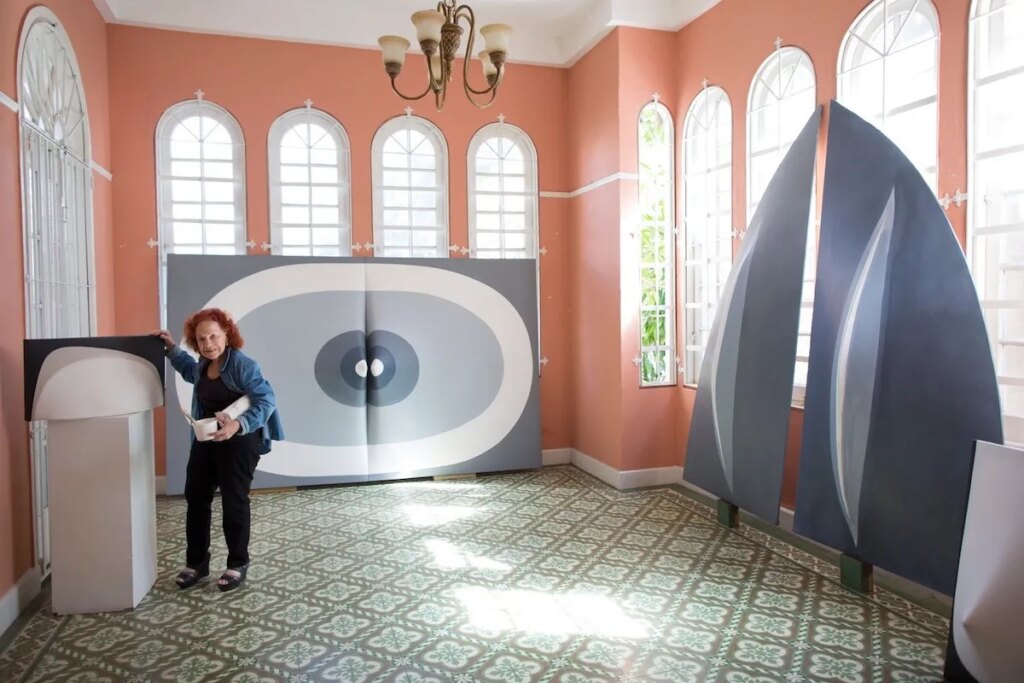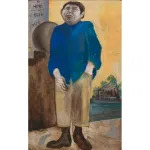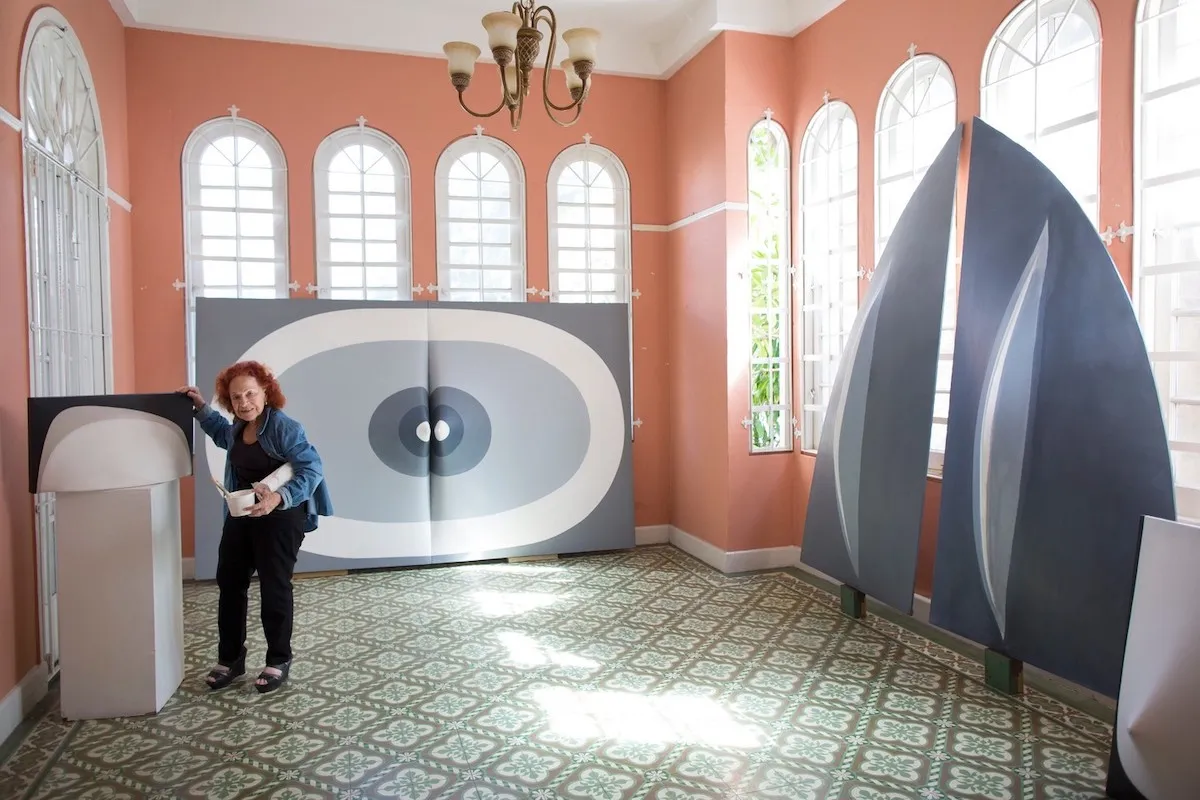
Zilia Sánchez, an artist known for her shaped canvases that bulge outward, has died at 98. The San Juan–based aritst’s death was announced on Thursday by the Museo de Arte de Puerto Rico, which did not state a cause.
Sánchez’s erotically tinged paintings alluded frequently to the female body, which she abstracted beyond recognition. Using a palette of muted grays and blues, she created spare canvases that were stretched taut over wooden frameworks. Those armatures, in turn, caused her paintings to appear three-dimensional.
The format was a unusual one. When she started making these pieces during the ’60s, Minimalism reigned, and steeliness was in. Sánchez’s works, by contrast, asserted a bodily presence that the Minimalists often denied.
She also demonstrated that the format was flexible and hardly formulaic. She often used it to refer to figures from Greek mythology, most notably in her “Troyanas” pieces, in which the women of Troy are invoked through nipple-like white circles that extend outward from the canvas. Those protrusions may appear sensual, but they also suggest spears—pointed tools of defense that ward off leery eyes.
A lesbian and a foreigner living in self-imposed exile, Sánchez occupied an unusual place in Puerto Rico, the island she had called home since 1971. She had achieved fame in her home country of Cuba during the ’50s, then departed for New York, leaving that acclaim behind. Then she fell into obscurity, known mainly to Puerto Ricans until the 2010s.

After her work appeared at Artists Space in New York in 2013, she gained a greater following beyond Puerto Rico. She appeared in the Venice Biennale in 2017, the same year that the Museum of Modern Art acquired one of her paintings, and she was the subject of a retrospective two years later that appeared at El Museo del Barrio, the Phillips Collection, and the Museo de Arte de Ponce. 2024 brought her more accolades: a survey at the Institute of Contemporary Art Miami and another Venice Biennale appearance.
Zilia Sánchez was born in 1926 in Havana to a Spanish father and a Cuban mother. Having lived above the painter Victor Manuel, Sánchez developed a taste for art-making early on, and went on to pursue it, graduating from the Escuela Nacional de Bellas Artes de San Alejandro in 1947.
She initially set out to become an architect, then set those plans aside. Sometimes, she said her pivot was because she merely didn’t like the math and the precision associated with the profession; other times, she said the Cuban Revolution had put an end to those plans.
But she was more definitive about the origins of her shaped paintings, which she traced to the year 1955. A sheet from her father’s deathbed had been hung to dry, and as it blew in the wind, she noticed it created certain forms. “I saw the form that came about because of that, and suddenly I saw the sheet like a painting,” she once said.
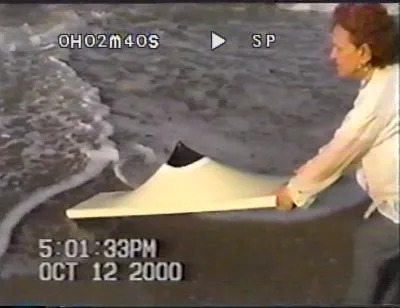
For the remainder of the ’50s, she continued producing paintings that had more in common with the aesthetics of Abstract Expressionism and Art Informel, two movements that placed an emphasis on messy paintstrokes. She gained critical attention for these works, all the while studying conservation techniques and traveling to Spain, France, and Italy. Some of these paintings referred explicitly to symbols associated with Afro-Cuban traditions.
Sometime during the early ’60s, Sánchez moved to New York, a city that, as art historian Christina Bryan Rosenberger once noted in Art in America, was far more permissive than Cuba when it came to out members of the gay community. She studied printmaking at the Pratt Institute and, partly as a way of making a living, also took work as an illustrator.
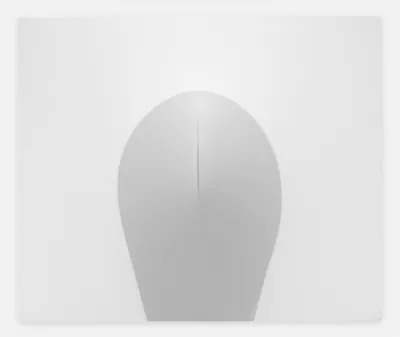
The relocation to New York coincided with a sharp change in her paintings. No longer were her colors so dark and strokes so raw. Now, she opted for smoother canvases and grayer tones—a look that notably shared something with Minimalism.
For a decade, Sánchez lived in Harlem. Then, dissatisfied with the city, she left New York for Puerto Rico, where she stayed ever since her move in 1971. There, her paintings grew larger and more ambitious, and she continued to work on them well into her final years, sometimes with the help of assistants.
In 2017, the year that her work appeared in a key Hammer Museum survey of Latina and Latin American artists, Sánchez was dealt a blow when Hurricane Maria struck her studio in Puerto Rico. According to T: The New York Times Style Magazine, the hurricane “wrecked the small building’s interior and destroyed much of her life’s work.” But she remained resilient anyway, slowly reconstructing her studio and continuing to work there all the while.
Asked by T about the last thing that made her cry two years later, in 2019, she said, “The recognition of my work.”

